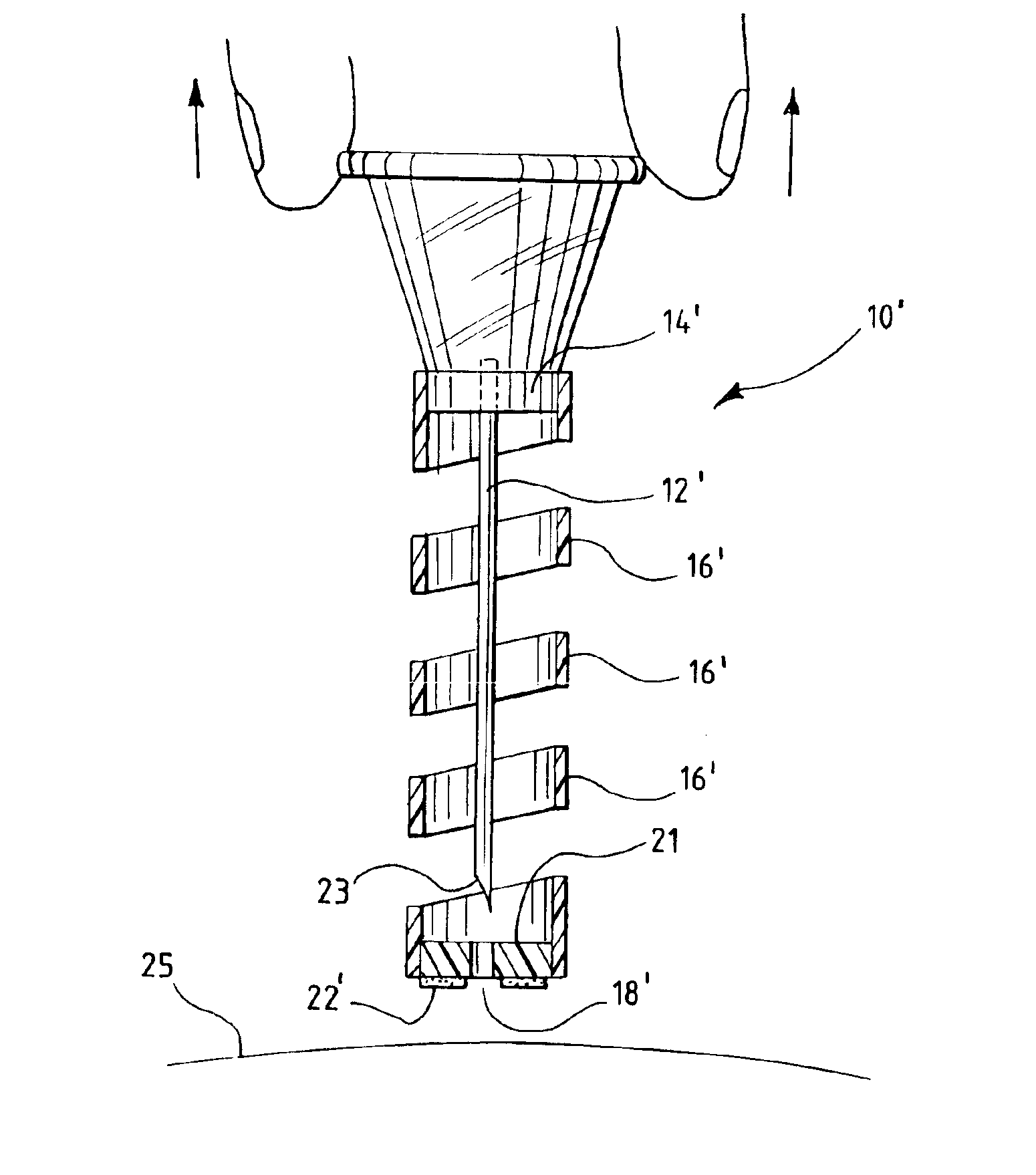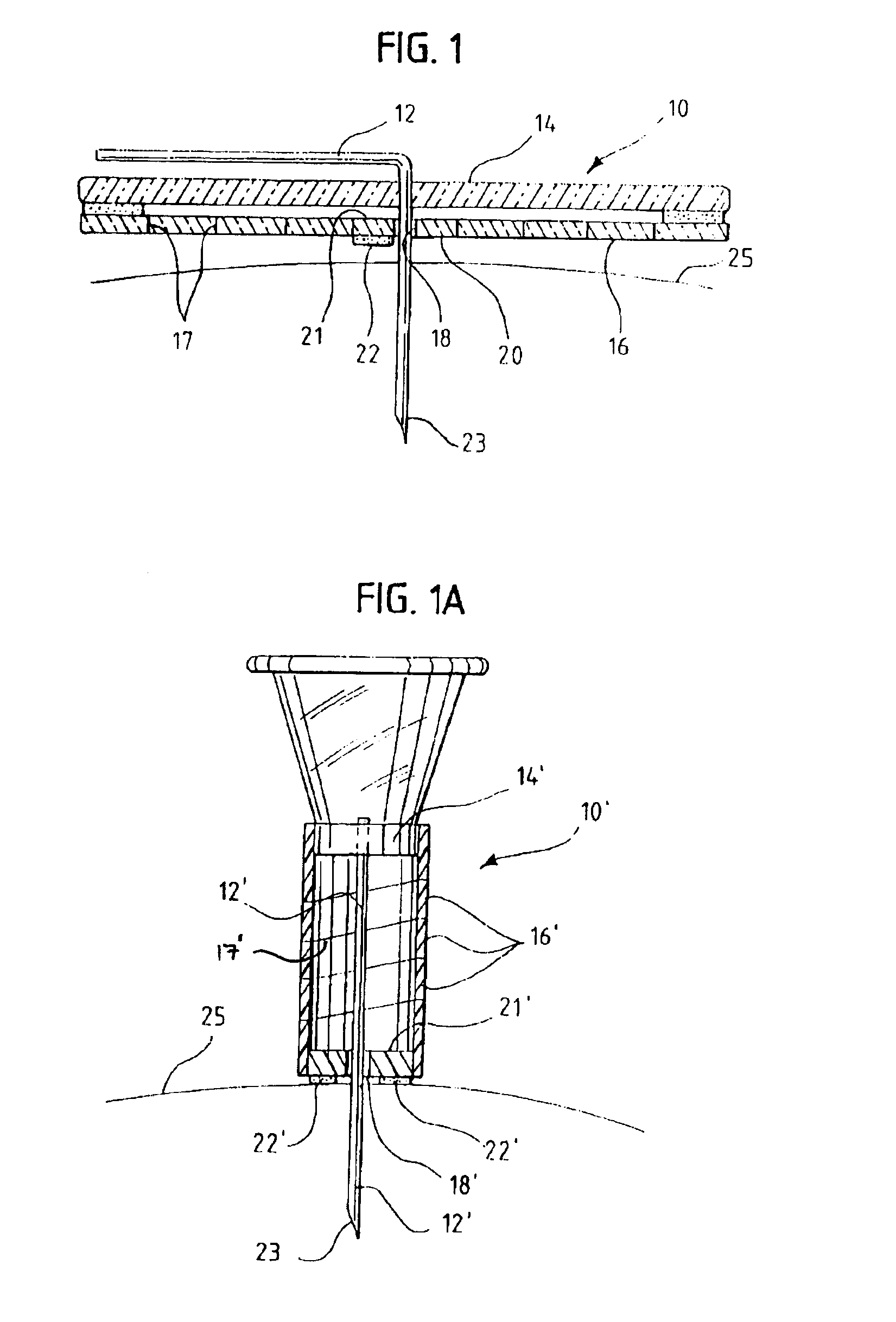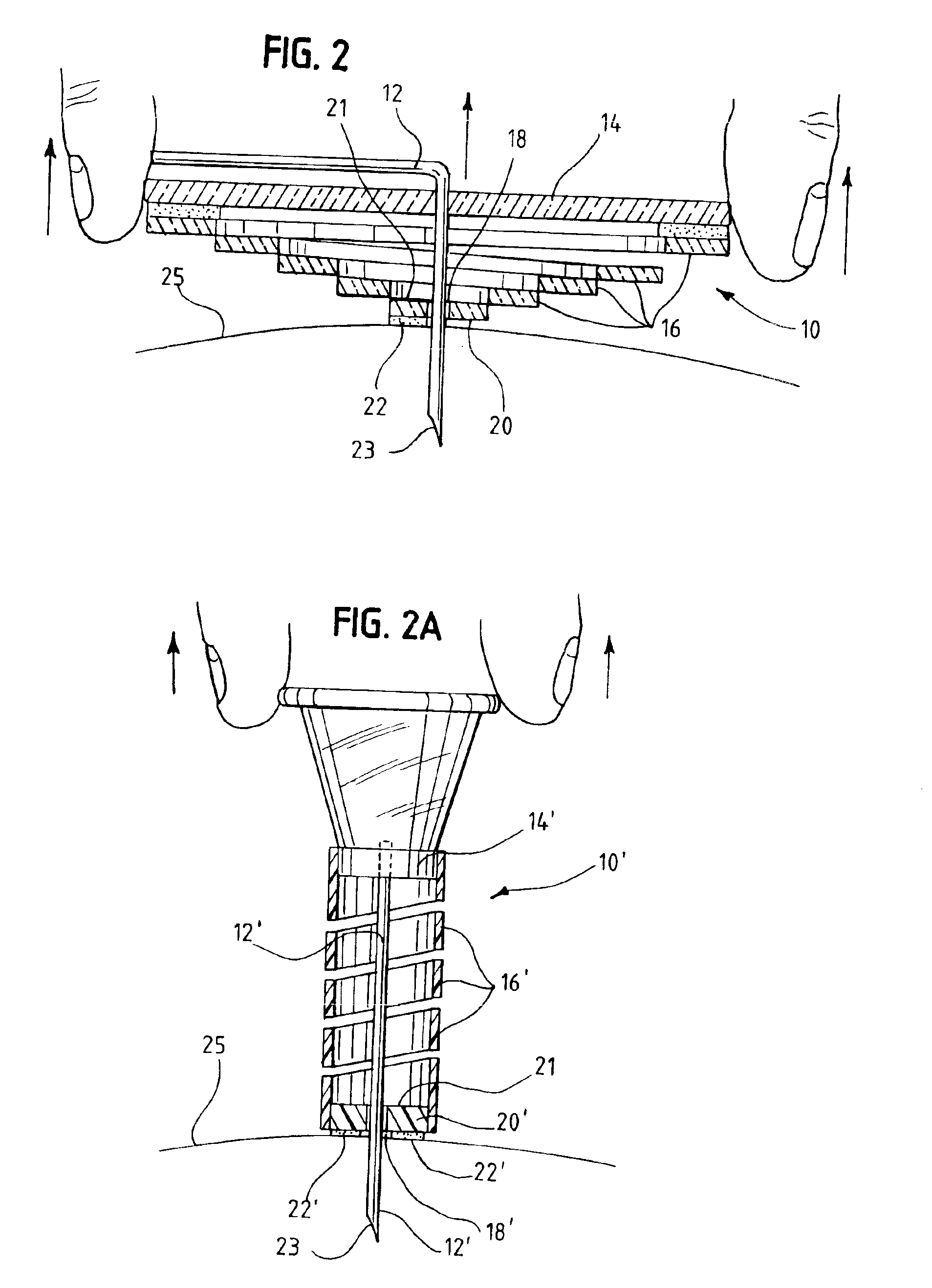Needle protection device
a protection device and needle technology, applied in the field of needle protection devices, can solve the problems of potential contact risk with needles, and no needle protection device that addresses the problems faced
- Summary
- Abstract
- Description
- Claims
- Application Information
AI Technical Summary
Benefits of technology
Problems solved by technology
Method used
Image
Examples
Embodiment Construction
[0019]For the purpose of promoting an understanding of the principles of the invention, reference will be made to the embodiments illustrated in the drawings. It will, nevertheless, be understood that no limitation of the scope of the invention is thereby intended, such alterations and further modifications in the illustrated device and such further applications of the principles of the invention illustrated herein being contemplated as would normally occur to one skilled in the art to which the invention relates.
[0020]The needle safety and protection device 10 and 10′ is attached to a conventional medical needle 12 and 12′, and comprises a base 14 and 14′, and a shield 16 and 16′, as shown in FIGS. 1 and 1A. The base 14 and 14′ is made of a semi-rigid polymeric material and is mounted on the needle 12 and 12′ or on a support for the needle, at a distance sufficient to allow the needle 12 and 12′ to enter human skin and perform its function appropriately.
[0021]Shield 16 and 16′ is a...
PUM
 Login to View More
Login to View More Abstract
Description
Claims
Application Information
 Login to View More
Login to View More - R&D
- Intellectual Property
- Life Sciences
- Materials
- Tech Scout
- Unparalleled Data Quality
- Higher Quality Content
- 60% Fewer Hallucinations
Browse by: Latest US Patents, China's latest patents, Technical Efficacy Thesaurus, Application Domain, Technology Topic, Popular Technical Reports.
© 2025 PatSnap. All rights reserved.Legal|Privacy policy|Modern Slavery Act Transparency Statement|Sitemap|About US| Contact US: help@patsnap.com



